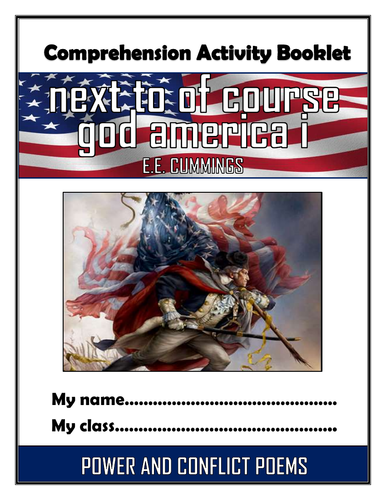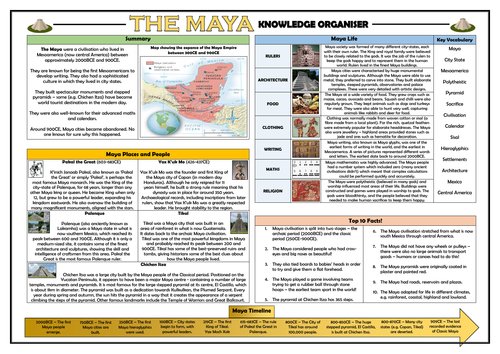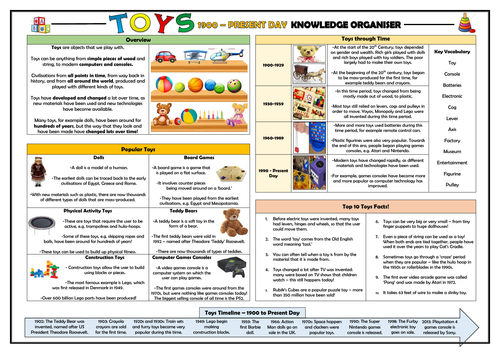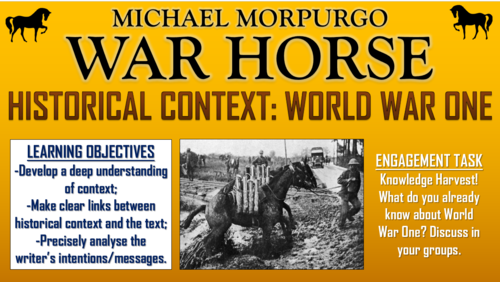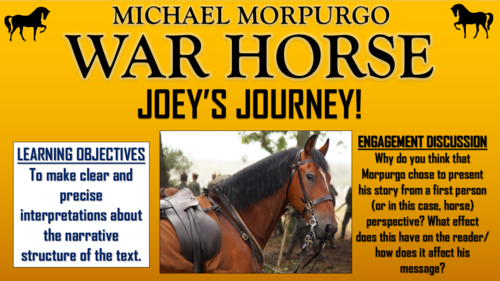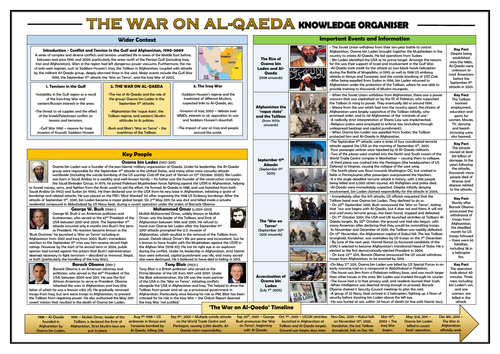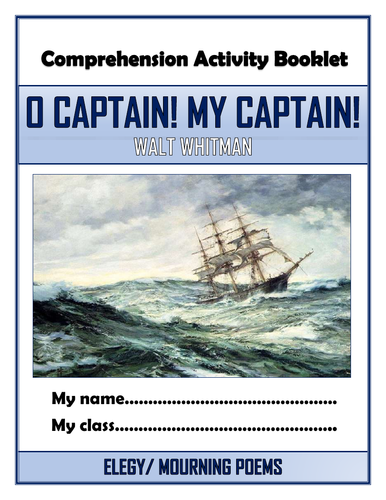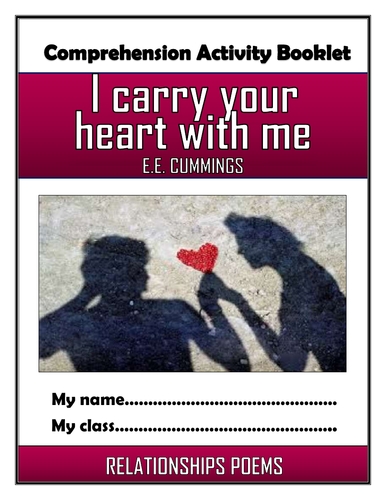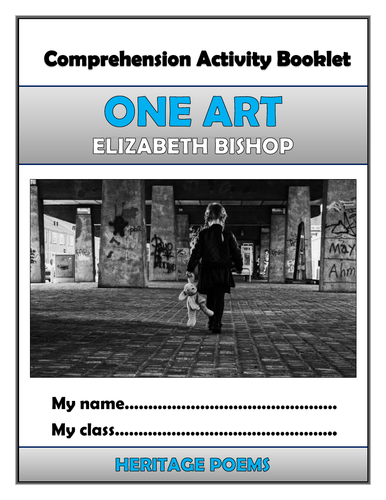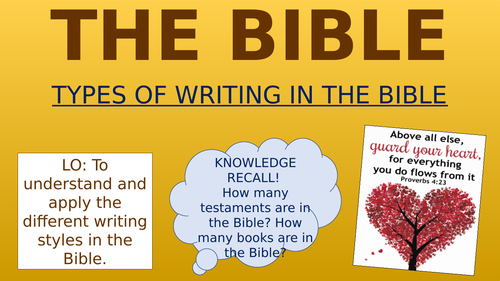
3k+Uploads
1953k+Views
2271k+Downloads
Whole school

next to of course god america i Comprehension Activities Booklet!
This 16-page resource booklet contains a wide range of challenging and engaging comprehension activities for use throughout the reading of E.E. Cummings’ poem 'next to of course god america i.’ They are perfect for aiding the progress of students learning poetry either in KS3 and KS4 in preparation for poetry/unseen poetry at GCSE, as the tasks draw on English Literature assessment objectives - suitable for all examining bodies - it is clearly highlighted within each task regarding which assessment strands the task is designed to demonstrate.
The booklet is provided in both Word (to allow for easy editing) and PDF (to ensure for consistency of formatting between computers).
Activities within the booklet include (amongst many others):
‘Analysing Context’ - helping students to ‘Show understanding of the relationships between texts and the contexts in which they were written.’
‘Analysing Subject Matter, Language and Structure’ - to help students to ‘Analyse the language, form and structure used by a writer to create meanings and effects, using relevant subject terminology where appropriate.’
‘Diary Entry’ - to help students to ‘Use a range of vocabulary and sentence structures for clarity, purpose and effect, with accurate spelling and punctuation. Make an informed personal response, recognising that other responses to a text are possible and evaluating these.’
‘The Speaker’ - to help students to ‘Read, understand and respond to texts. Students should be able to: maintain a critical style and develop an informed personal response use textual references, including quotations, to support and illustrate interpretations.’

Fire and Ice Comprehension Activities Booklet!
This 16-page resource booklet contains a wide range of challenging and engaging comprehension activities for use throughout the reading of Robert Frost’s poem 'Fire and Ice.’ They are perfect for aiding the progress of students learning poetry either in KS3 and KS4 in preparation for poetry/unseen poetry at GCSE, as the tasks draw on English Literature assessment objectives - suitable for all examining bodies - it is clearly highlighted within each task regarding which assessment strands the task is designed to demonstrate.
The booklet is provided in both Word (to allow for easy editing) and PDF (to ensure for consistency of formatting between computers).
Activities within the booklet include (amongst many others):
‘Analysing Context’ - helping students to ‘Show understanding of the relationships between texts and the contexts in which they were written.’
‘Analysing Subject Matter, Language and Structure’ - to help students to ‘Analyse the language, form and structure used by a writer to create meanings and effects, using relevant subject terminology where appropriate.’
‘Diary Entry’ - to help students to ‘Use a range of vocabulary and sentence structures for clarity, purpose and effect, with accurate spelling and punctuation. Make an informed personal response, recognising that other responses to a text are possible and evaluating these.’
‘The Speaker’ - to help students to ‘Read, understand and respond to texts. Students should be able to: maintain a critical style and develop an informed personal response use textual references, including quotations, to support and illustrate interpretations.’

KS1 Great Fire of London Knowledge Organiser/ Revision Mat!
This clear, detailed and visually-appealing resource offers a complete reference point for KS1 children learning or revising knowledge relating to the The Great Fire of London. It contains comprehensive sections on:
The Great Fire of London Overview;
Map and description of the Affected Areas;
Key People;
The Great Fire of London Timeline;
Answers to the Important Questions;
Top Ten Facts.
The resource is designed to be printed onto A3, and is provided as both a PDF and a Word version (so that you can edit if you want to). All images used are licensed for commercial use and are cited on a separate document (included).

The Maya Knowledge Organiser/ Revision Mat!
This detailed and visually-appealing resource offers a complete reference point for students learning or revising knowledge of The Maya civilisation. It contains comprehensive sections on:
-Overview and Maps;
-Key Places and People;
-Daily Life;
-Top Ten Maya Facts;
-Key Vocabulary
-Maya Timeline.
Key words and ideas are underlined for easy reference. The resource is designed to be printed onto A3, and is provided as both a PDF and a Word version (so that you can edit if you want to). All images used are licensed for commercial use and are cited on a separate document (included). The resource can be adapted for all age groups, but was originally designed for those in KS2.

Toys - 1900 to Present Day - Knowledge Organiser!
This clear, detailed and visually-appealing resource offers a complete reference point for children learning about toys as a part of their history study of ‘changes within living memory.’ It tracks the development of toys from 1900 to the present day, and contains comprehensive sections entitled:
Overview;
Popular Toys;
Important Vocabulary;
Toys Timeline;
Toys Through Time;
Top Ten Facts.
The resource is designed to be printed onto A3, and is provided as both a PDF and a Word version (so that you can edit if you want to). All images used are licensed for commercial use.

Toys Past and Present - Knowledge Organiser!
This clear, detailed and visually-appealing resource offers a complete reference point for children learning about toys as a part of their history study of ‘changes within living memory.’ It tracks the development of toys from ancient civilisations to the present day, and contains comprehensive sections entitled:
Overview;
Popular Toys;
Important Vocabulary;
Toys Timeline;
Toys Through Time;
Top Ten Facts.
The resource is designed to be printed onto A3, and is provided as both a PDF and a Word version (so that you can edit if you want to). All images used are licensed for commercial use.

Sonnet 18 - 'Shall I compare thee to a summer's day?' - Knowledge Organiser!
This detailed and visually-appealing resource offers a complete reference point for students learning or revising William Shakespeare’s Sonnet 18: 'Shall I compare thee to a summer’s day?’ It contains comprehensive sections on:
Context;
Line-by-Line Analysis;
Poetic Devices/ Language Devices;
Themes;
Form/Structure;
Poems for Comparison;
Links to Wider Reading.
Key words and ideas are underlined for easy reference. The resource is designed to be printed onto A3, and is provided as both a PDF and a Word version (so that you can edit if you want to).

War Horse Knowledge Organiser/ Revision Mat!
This detailed and visually-appealing resource offers a complete reference point for students learning or revising Michael Morpugo’s ‘War Horse.’ It contains comprehensive sections on:
Context;
Chapter by Chapter Summary (with quotes);
Main Characters;
Themes;
Morpugo’s Language Devices;
Influences on the Writer.
Key words and ideas are underlined for easy reference. The resource is designed to be printed onto A3, and is provided as both a PDF and a Word version (so that you can edit if you want to). All images used are licensed for commercial use and are cited on a separate document (included).

War Horse - Historical Context: World War One!
This engaging and informative lesson enables students to understand the key features of the historical context of World War I, in order to gain a clearer of understanding of Michael Morpurgo’s War Horse. In particular, students learn about the key features of World War I (including the role of horses) before linking their understanding of historical context to different extracts from the text. Finally, they analyse Morpurgo’s key intentions/messages in including such ideas within his novel.
The lesson follows a step-by-step learning journey, in which children learn through:
Researching and understanding key information about World War I, including how it was initiated, the role of horses, life in the trenches, and going ‘over the top;’
Linking the key features of context to sections of the text;
Reading selected extracts from the text, in order to link ideas regarding context and text together;
Analysing Morpurgo’s key messages and ideas in through his depiction of the historical context;
Creating their own anti-war propaganda posters, detailing what war was really like for young soldiers;
Peer assessing each other’s learning attempts;
Included is:
Whole lesson PowerPoint - colourful and comprehensive;
Research Template;
Selected extracts (from chapters 2, 4, 7 and 8);
Essay template
Comprehensive lesson plan.
There are also opportunities for group learning, speaking and listening, peer assessment, and whole class discussion. I originally used these resources with year 7 and 8 classes, however colleagues have used them for between year 4 (advanced) and year 9 with minimal adaptations.
Please note that students will need internet access for the research introduction task.
All images are licensed for commercial use, and image rights are listed on the last page of the presentation.

War Horse - Joey's Journey!
This engaging and informative lesson enables students to understand the structural features used by Michael Morpurgo to plot the narrative and engage the reader in War Horse. In particular, students analyse the effectiveness of his first person perspective and narrative structure, before creating their own well-structured story plans.
The lesson follows a step-by-step learning journey, in which children learn through:
Understanding the benefits of Morpurgo’s first person narration from Joey’s viewpoint;
Defining and exemplifying the different stages of narrative structure;
Applying this understanding to ‘War Horse’, considering why each stage of narrative structure is vital to the novel.
Analysing the effectiveness of Morpurgo’s structural devices, considering the effect on the reader;
Creating plans for the structure of their own WW1 narratives, utilising the structural components discussed over the lesson ;
Peer assessing each other’s learning attempts;
Included is:
Whole lesson PowerPoint - colourful and comprehensive;
Narrative Structure Graph Template;
Storyboard Template;
Comprehensive lesson plan.
There are also opportunities for group learning, speaking and listening, peer assessment, and whole class discussion. I originally used these resources with year 7 and 8 classes, however colleagues have used them for between years 4 and 9 with minimal adaptations.
All images are licensed for commercial use, and image rights are listed on the last page of the presentation.

The War on Al-Qaeda - Knowledge Organiser/ Revision Mat!
This detailed and visually-appealing resource offers a complete reference point for students learning or revising knowledge of The War on Al-Qaeda. This is an important component in history modules covering ‘Conflict and Tension in the Gulf and Afghanistan, 1990-2009.’ It contains comprehensive sections on:
Major Events - dates, images, descriptions, and key facts - including the rise of Osama bin Laden and Al-Qaeda, Afghanistan ‘the rogue state’ and the Taliban, the September 11th attacks, the ‘War on Terror’ and the assassination of Osama bin Laden;
Key People - Osama bin Laden, George W. Bush, Mullah Omar, Barack Obama and Tony Blair.
Context - Conflict and Tension in the Gulf and Afghanistan Overview and Map;
Timeline of Major Events.
Key words and ideas are underlined for easy reference. The resource is designed to be printed onto A3, and is provided as both a PDF and a Word version (so that you can edit if you want to). All images are from Wikimedia Commons and are licensed for commercial use.

Tensions in the Gulf - Knowledge Organiser/ Revision Mat!
This detailed and visually-appealing resource offers a complete reference point for students learning or revising knowledge of Tensions in the Gulf: an important component in studying ‘Conflict and Tension in the Gulf and Afghanistan, 1990-2009.’ It contains comprehensive sections on:
Major Events - dates, images, descriptions, and key facts - including the rise of Saddam Hussein, the Israeli-Palestinian Conflict, the Iran-Iraq War, the Gulf War and the Aftermath of the Gulf War;
Key People - Saddam Hussein, George H.W. Bush, King Fahd of Saudi Arabia, Ruhollah Khomeini and Margaret Thatcher.
Context - Conflict and Tension in the Gulf and Afghanistan Overview and Map;
Timeline of Major Events.
Key words and ideas are underlined for easy reference. The resource is designed to be printed onto A3, and is provided as both a PDF and a Word version (so that you can edit if you want to). All images are from Wikimedia Commons and are licensed for commercial use.

O Captain! My Captain! Comprehension Activities Booklet!
This 16-page resource booklet contains a wide range of age-appropriate, engaging, and meaningful comprehension activities for use throughout the reading of Walt Whitman’s elegy poem ‘O Captain! My Captain.’ Teachers have found them particularly useful throughout teaching, or for exam revision or guided reading sessions. They are perfect for aiding the progress of students towards meeting the key English Literature assessment objectives - suitable for all examining bodies. Students have found these resources extremely engaging, and it is clearly highlighted within each task regarding which assessment strands the task is designed to demonstrate.
Activities within the booklet include:
‘Analysing Context’ - helping students to ‘Show understanding of the relationships between texts and the contexts in which they were written.’
‘Analysing Subject Matter, Language and Structure’ - to help students to ‘Analyse the language, form and structure used by a writer to create meanings and effects, using relevant subject terminology where appropriate.’
‘Diary Entry’ - to help students to ‘Use a range of vocabulary and sentence structures for clarity, purpose and effect, with accurate spelling and punctuation. Make an informed personal response, recognising that other responses to a text are possible and evaluating these.
‘The Speaker’ - to help students to ‘Read, understand and respond to texts. Students should be able to: maintain a critical style and develop an informed personal response use textual references, including quotations, to support and illustrate interpretations.’
Plus many, many more activities! I’ve also added it as a PDF in case the formatting differs on your computer.

I carry your heart with me - Comprehension Activities Booklet!
This 16-page resource booklet contains a wide range of challenging and engaging comprehension activities for use throughout the reading of E.E Cummings’ poem 'I carry your heart with me.’ They are perfect for aiding the progress of students learning poetry either in KS3 and KS4 in preparation for poetry/unseen poetry at GCSE, as the tasks draw on English Literature assessment objectives - suitable for all examining bodies - it is clearly highlighted within each task regarding which assessment strands the task is designed to demonstrate.
The booklet is provided in both Word (to allow for easy editing) and PDF (to ensure for consistency of formatting between computers).
Activities within the booklet include (amongst many others):
‘Analysing Context’ - helping students to ‘Show understanding of the relationships between texts and the contexts in which they were written.’
‘Analysing Subject Matter, Language and Structure’ - to help students to ‘Analyse the language, form and structure used by a writer to create meanings and effects, using relevant subject terminology where appropriate.’
‘Diary Entry’ - to help students to ‘Use a range of vocabulary and sentence structures for clarity, purpose and effect, with accurate spelling and punctuation. Make an informed personal response, recognising that other responses to a text are possible and evaluating these.’
‘The Speaker’ - to help students to ‘Read, understand and respond to texts. Students should be able to: maintain a critical style and develop an informed personal response use textual references, including quotations, to support and illustrate interpretations.’

One Art - Elizabeth Bishop - Comprehension Activities Booklet!
This 16-page resource booklet contains a wide range of challenging and engaging comprehension activities for use throughout the reading of Elizabeth Bishop’s poem 'One Art.’ They are perfect for aiding the progress of students learning poetry either in KS3 and KS4 in preparation for poetry/unseen poetry at GCSE, as the tasks draw on English Literature assessment objectives - suitable for all examining bodies - it is clearly highlighted within each task regarding which assessment strands the task is designed to demonstrate.
The booklet is provided in both Word (to allow for easy editing) and PDF (to ensure for consistency of formatting between computers).
Activities within the booklet include (amongst many others):
‘Analysing Context’ - helping students to ‘Show understanding of the relationships between texts and the contexts in which they were written.’
‘Analysing Subject Matter, Language and Structure’ - to help students to ‘Analyse the language, form and structure used by a writer to create meanings and effects, using relevant subject terminology where appropriate.’
‘Diary Entry’ - to help students to ‘Use a range of vocabulary and sentence structures for clarity, purpose and effect, with accurate spelling and punctuation. Make an informed personal response, recognising that other responses to a text are possible and evaluating these.’
‘The Speaker’ - to help students to ‘Read, understand and respond to texts. Students should be able to: maintain a critical style and develop an informed personal response use textual references, including quotations, to support and illustrate interpretations.’

Two Terrible Vikings - Whole Class Reading Session!
This whole class reading session aims to develop children’s comprehension skills through a reading of the opening chapter of Francesca Simon’s ‘Two Terrible Vikings.’
The resource pack includes the extract and all of the activities for the session, which the class are guided through via a comprehensive PowerPoint presentation. The reading is followed by a series of activities aiming to develop children’s retrieval, explanation, inference, prediction and summarising skills. It also contains a vocabulary check immediately after the extract is read to clarify any unfamiliar/ difficult language.
The tasks are comprised of quick-check questions, solo thinking, pair/ group discussions and deeper thinking activities.
The session is best suited for children in years 2-4, although with minor adaptations it could feasibly be used with slightly younger and older year groups. The session is suitable for home/ remote learning.

The Bible - Introduction to the Bible!
In this lesson, students learn about the key features of the Bible, including:
-What the Bible is comprised of;
-What the Bible tells Christians;
-Different versions of the Bible;
-Further information about the Old Testament and the New Testament;
-Different types of writing in the Bible.
Children learn through collating prior knowledge of about the Bible, watching an interesting video (hyperlinked) and recording the key information, and exploring Bibles for themselves (ensure that you have enough Bibles for each group to share one).
This resource pack contains a comprehensive 14-slide Powerpoint, alongside an eye-catching worksheet. Challenge activities are provided in order to enrich learning for higher-attaining learners.
In the past, I have used this lesson with children from across Key Stage 2 - the key learning is aligned with national expectations for RE, and also the content prescribed by most diocese regions. All images are licensed for commercial use, and are cited on the final slide.

The Bible - Bible Structure and Referencing!
In this engaging and informative lesson, students learn about the structure of the Bible, and gain an understanding of how to read and apply Bible references. They learn through:
-Recalling and remembering the different sections of the Bible;
-Considering what is detailed in each section;
-Understanding how and why Bible references are used;
-Applying knowledge of Bible references to a fun ‘Find the Animal’ game;
-Challenging their friends to find different details using references;
-Completing a ‘Bible Bookcase’ to remember the different sections of the Bible.
This resource pack contains a comprehensive and colourful 15-slide Powerpoint, alongside an eye-catching worksheet (2 different versions for different levels of learners in the class). Challenge activities are provided in order to enrich learning for higher-attaining learners.
A part of the lesson includes using Bibles, so you will need enough for at least one per group in your class.
In the past, I have used this lesson with children from across Key Stage 2 - the key learning is aligned with national expectations for RE, and also the content prescribed by most diocese regions. All images are licensed for commercial use, and are cited on the final slide.

The Bible - Types of Writing in the Bible!
In this engaging and informative lesson, students learn about the different types of writing in the Bible, consider how these different writing forms get across key messages, and apply this knowledge in creating their own thoughtful texts. They learn through:
-Recalling and remembering how to reference different sections of the Bible;
-Acting as ‘Bible Detectives’, follwing references in order to find different styles of writing;
-Analysing how different styles of writing add to meanings/ messages;
-Considering important messages and lessons that they have been given in their own lives, and applying knowledge of different writing styles to contribute to a ‘Class Bible’;
-Evaluating their ‘Class Bible’ through thought-provoking reflection questions;
This resource pack contains a comprehensive and colourful 17-slide Powerpoint, which guides teachers and students through the learning activities. Challenge activities are provided in order to enrich learning for higher-attaining learners.
A part of the lesson includes using Bibles, so you will need enough for at least one per group in your class.
In the past, I have used this lesson with children from across Key Stage 2 - the key learning is aligned with national expectations for RE, and also the content prescribed by most diocese regions. All images are licensed for commercial use, and are cited on the final slide.

The Bible - The Ten Commandments!
In this engaging and informative lesson, students learn about the different ways in which Christians interpret the Bible, with a particular focus on the Ten Commandments. They learn through:
-Recalling and remembering foundation contextual facts about the Bible;
-Predicting, reading, interpreting and sequencing the Ten Commandments;
-Analysing how different Christians may read the commandments, depending upon if they are fundamentalist or liberal;
-Considering important rules and procedures that should be followed at school, to create their own 'School Commandments’;
-Evaluating their School Commandments through thought-provoking reflection questions;
This resource pack contains a comprehensive and colourful 16-slide Powerpoint, which guides teachers and students through the learning activities. Challenge activities are provided in order to enrich learning for higher-attaining learners. A template worksheet is also provided (in Word and PDF) for the students to scribe their school commandments.
In the past, I have used this lesson with children from across Key Stage 2 - the key learning is aligned with national expectations for RE, and also the content prescribed by most diocese regions.
This lesson is suitable for remote learning.
All images are licensed for commercial use, and are cited on the final slide.

